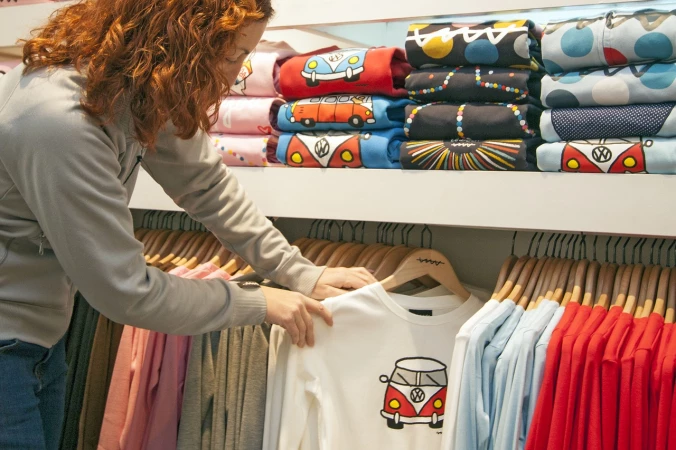MANUFACTURER OF ADVERTISING GADGETS | FAST DELIVERY TIME | FREE CONSULTING
Printing House

DTG printing - what is it?
If you're thinking about how you want to apply something to your garment, nowadays the choice of techniques with which to do so - is really quite large. Among the range, DTG printing (DTG printing) is one of the most interesting methods.
DTG printing - what it is
DTG printing - its name comes from the English expression Direct To Garment, which in Polish means something like "directly to garment", hence in our country DTG printing is often called direct printing. It is a modern method of digital printing directly onto textiles, which allows logos, lettering, coats of arms, and even photographs or other designs to be reflected on the garment in practically all possible colours, and also in excellent resolution, making the DTG print look great on the T-shirt. The quality of the printed image is therefore described as photographic, with the added advantage of no contours or borders. It is therefore currently one of the best methods when it comes to colour printing.
Another labelling method that uses the entire colour gamut is sublimation printing, which, like DTG, we use for labelling some of the products in our shop.
Advantages and disadvantages of DTG printing
DTG printing is often referred to as the successor to the popular screen printing. However, it is a much more modern method that is increasingly being chosen by customers because of its advantages. DTG printing has quite a few advantages:
- Visual quality - colour printing using the DTG method is truly of the highest quality. The design is reproduced with the highest accuracy, so we see exactly what we want on the garment. In addition, we can even use it to apply photos to textiles, which will also look very good. The resolution in this technique is up to 1200 DPI.
- Turnaround time and cost-effectiveness for smaller runs - DTG printing is much quicker than screen printing because it does not require matrices, for example, and therefore the whole process of preparing the printing form is bypassed, which also means lower prices, as we do not have to pay for such preparation. This also means that DTG printing is also cost-effective for the small quantities of garments that we want to label.
- Technical quality - DTG printing is also technically excellent and very beneficial in terms of the subsequent use of the garments to which such colour printing has been applied. The person walking around in a T-shirt or sweatshirt does not feel uncomfortable and does not have to worry about damage. Namely: it does not wrinkle, crack or crumble. In addition, it is almost imperceptible to the touch, does not weigh down the garment and, most importantly, is air permeable, meaning that the skin has access to it and can therefore "breathe".
However, it is well known that it is hard to find something that is perfect. The same is true of DTG printing, which also has some disadvantages. One of them is that it does not work very well with fabrics with a high synthetic admixture, which should be a maximum of 20%. Natural fabrics are therefore recommended. Another element that we can consider as a disadvantage is the fact that top-quality inks cost quite a lot and the price of printing is high, as well as the care we have to take when washing garments marked in this way.
DTG digital printing - application and operation
DTG digital printing involves directly printing a graphic file onto a garment without using any transfer medium such as paper or film. DTG printing is carried out using a special printer (plotter) somewhat resembling a traditional inkjet printer. Such colour printing can be done up to A3 size. During printing, the ink somehow penetrates and soaks into the material and binds to it, which ensures durability and wearing comfort. DTG printing can thus be used on any part of the garment - including seams, welts or even the joining of materials.
DTG printing is mainly used by customers who want very good quality and the highest level of graphic reproduction. As a manufacturer of corporate clothing, we use it when we label promotional sweatshirts as well as printed cotton bags. It is also great for smaller orders as it does not require the preparation of a matrix. It is often ordered for special events where personalised T-shirts are needed, as well as by companies that do not need garments numbering in the dozens or hundreds and by individuals who want unique garments. This is because DTG printing is cost-effective from just one piece.
